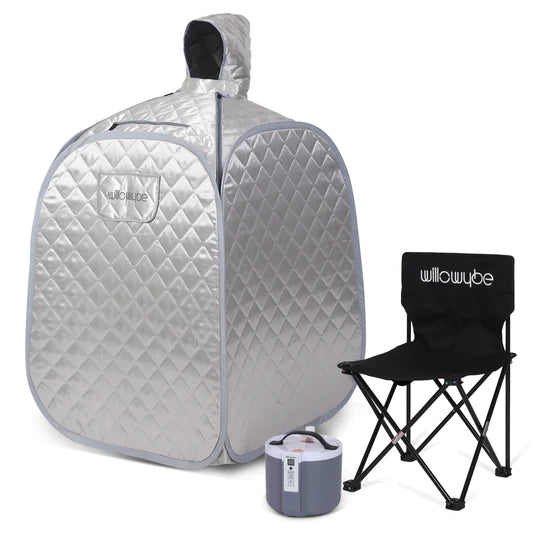
What is the Difference Between Dry Sauna and Steam Sauna?
A sauna is an enclosed space for exposing your entire body to heat for various health benefits. Both dry saunas and portable steam saunas can bring the heat, but is one better than the other, and which one should you use?
How A Dry Sauna Works
People can be talking about a couple of different types of the sauna when referring to a dry sauna. There's the traditional sauna where the surrounding air is heated using hot rocks. Don't splash the rocks with water, and you have a dry sauna.
However, many people find the dry air environment in a traditional sauna uncomfortable and use steam to raise the humidity and make breathing more comfortable.
The other type of dry sauna and the one we are comparing to a portable steam sauna is the far infrared type. Infrared rays projected by electric elements do not heat the surrounding air. Instead, they penetrate the body directly to create heat and activate the sweat glands.
Infrared saunas are typically more compact than a regular sauna, making them perfect for a portable setup people can use at home while watching TV.
How a Personal Steam Sauna Works
A portable steam sauna is a small fabric enclosure big enough for one body that creates heat through steam rather than radiated heat. There is no heating unit inside the sauna itself. A steam generator sits outside the enclosure, and a pump transfers the steam through a pipe connecting to an inlet hole.
Unlike a regular sauna, both portable far infrared dry saunas and portable steam saunas do not expose your face to the heat. Many users might find this is a more comfortable way to enjoy the health benefits of a hot sauna.
Another advantage of a portable steam sauna is that you can add essential oils to the steamer to create an at-home spa experience. A similar session at a professional spa would likely cost you the same prices as the portable steam sauna. This way, you can enjoy your aromatic sauna whenever you like, at a fraction of the cost.
In the end, both types of saunas deliver heat, and both have been shown to be beneficial for cardiovascular health, joint pain, and stress relief, so it's mostly a matter of personal preference which one you choose.

